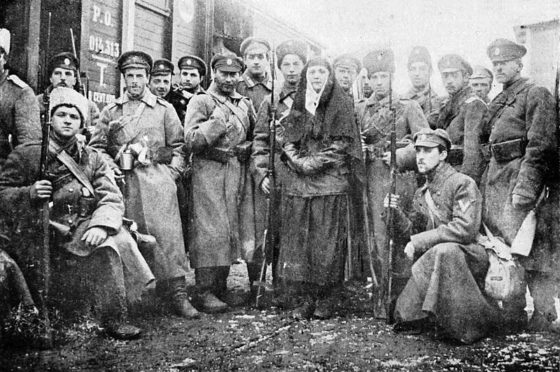
“Rumours circulating in his squadron suggested that Walcott intentionally fled the morning of the flight.”
By Bill Simpson
It was a bright clear morning on April 20, 1942 when the skies above Malta were suddenly filled with dozens of Spitfires.
Those living through the seemingly endless aerial bombardment of the tiny British-controlled Mediterranean island stared in disbelief as the formation of friendly fighters split into two roughly equal groups.
One pulled into in a tight formation to land at the strip at Ta’Qali; the other descended on the runway at Luqa.
For the pilots of the two squadrons, it was the end of a long, hazardous flight organized to reinforce the beleaguered outpost from near-constant Axis air attacks.

Hours earlier, 47 Spitfires had taken off from the American carrier USS Wasp at the western end of the Mediterranean. Hours later, only 46 had arrived over the island. The squadron landing at Ta’Qali was one plane short; a young American volunteer to the RCAF, Sergeant ‘Bud’ Walcott, was missing. He had somehow disappeared en route.
For the squadron commander there was only one explanation: Walcott had chosen to desert.
Almost as soon as the fighters arrived, a signal reporting as much was transmitted to RAF authorities in London
The communique alleged that before taking off Walcott had even told his cabin mate aboard the Wasp that ‘Malta would never see him.’

This was not the first time the young flier had gone missing. Months earlier, Walcott allegedly undertook an unauthorized flight from his training base in northwest England to neutral Dublin, Ireland in hopes that he might be returned to the United States.
It’s clear that many of Walcott’s squadron mates despised him.
After arriving in his new unit a few weeks before the Malta deployment, he was allegedly involved in a mid-air collision over the airfield that killed another pilot. The other fliers blamed the American for the accident and some said that it would have been better had it been Walcott who’d died.
But what had happened to Walcott on the April 10?
Walcott claimed that shortly after departing the Wasp, his Spitfire suffered engine problems, which caused him to divert to North Africa. Along the way he had been fired upon by an enemy ship.
He reported making an emergency landing in Vichy-controlled North Africa, after which he was picked up by the enemy and interned in a camp.

Yet rumours circulating in his squadron suggested that Walcott intentionally fled the morning of the flight to Malta. After he landed he Spitfire, he supposedly presented himself at an American consular office in North Africa to seek passage back to the United States.
Yet no proof to support the allegations of desertion was ever provided.
It’s true that Walcott did fly to neutral Dublin, but the Irish authorities have no record of him requesting repatriation. Both he and his aeroplane at the time – a Hawker Hurricane – were sent back to the U.K. He claimed the episode was a simple case of a navigational error made by a rookie pilot.
Evidence that he requested repatriation from North Africa is also non-existent. In fact, he suffered deprivation in captivity and eventually returned from North Africa to the U.K. – not the U.S.
The truth is Walcott loved to fly and had the ‘right stuff’ to be a fighter pilot. He took risks. He was lively and likeable, popular with those who knew him – save for his squadron-mates. So why the tarnishing of his name? Was he a coward or perhaps a victim of the British social class structure still evident in some parts of the RAF and in his squadron? Did the brash young ‘Yank’ ruffle some stiff British feathers?
In my book Spitfire Deserter?, I explore the case of Bud Walcott and separate the facts from the innuendo. I dig into what really happened to the young pilot on that fateful morning in 1942 and his exploits after his wayward flight. How he was eventually liberated from the Vichy camp and how he returned to the U.K. to fly, although not with the RAF, but the U.S. Army Air Forces. I also track how a supposed “coward” would end up flying combat missions throughout the war and even participate in the Berlin Airlift. But primarily it is the story of a man caught up in events that changed his life, but over which he had no control.
Interestingly Walcott never lived to learn of the allegations made against him; he eventually took his own life in 1962. But death was unrelated to his damaged reputation.
 ABOUT THE AUTHOR: Bill Simpson is the author of Spitfire Deserter?: The American Pilot Who Went Missing and several books about the RAF and its reserve forces during the Second World War. He became interested in ‘Bud’ Walcott while co-authoring a history of his local RAF Auxiliary squadron – 603 (City of Edinburgh) Squadron. He was particularly concerned at the allegations being made about Walcott and the apparent lack of justification for them. He lives in Edinburgh in Scotland.
ABOUT THE AUTHOR: Bill Simpson is the author of Spitfire Deserter?: The American Pilot Who Went Missing and several books about the RAF and its reserve forces during the Second World War. He became interested in ‘Bud’ Walcott while co-authoring a history of his local RAF Auxiliary squadron – 603 (City of Edinburgh) Squadron. He was particularly concerned at the allegations being made about Walcott and the apparent lack of justification for them. He lives in Edinburgh in Scotland.










1 thought on “The Mystery of Sergeant Bud Walcott – Did an American RAF Spitfire Pilot Really Desert from Malta in WW2?”